-
About Us
- Advocacy Priorities
- Careers at Council
- Contact Us
- Council
- Have your say
- Local laws and legislation
-
Major Council projects
- Aboriginal Gathering Place
- Doreen Dirt Jumps
- Findon Road extension
- Granite Hills Major Community Park
- HR Uren Recreation Reserve redevelopment
- Kelynack Recreation Reserve upgrades
- Kirrip Community Centre Library Hub
- Mernda Adventure Park precinct
- Mernda Library
- Mernda Social Support Centre
- Mill Park Stadium
- Murnong Community Centre
- Norris Bank Reserve upgrade
- Peter Hopper Lake revitalisation
- Plenty Road-Everton Drive intersection
- Quarry Hills Connecting Trails
- Redleap Recreation Reserve
- Regional Sports Precinct in Mernda
- Riverside Reserve redevelopment
- Tramoo Street shopping precinct upgrade
- Whittlesea Park Master Plan
- Whittlesea Public Gardens redevelopment
- Whittlesea skate park and BMX track upgrade
- Wollert Church relocation and restoration
- News & Publications
- Our city
- Rates
-
Waste & Environment
-
Bins & waste
- A-Z guide to waste and recycling
- Bin collections
- Braille bin stickers
- Bundled branch collection
- Cancel your extra bin
- Container Deposit Scheme
- Damaged bin repair or replacement bins
- E-waste
- Food and garden waste bin
- Food waste recycling
- Glass recycling
- Hard rubbish collection
- Needle and syringe disposal
- Order new bins
- Order extra bins
- Report dumped rubbish and litter
- Rethinking Waste Plan 2021-2030
- Waste and recycling facilities
- Living Green
- Stormwater and rainwater
-
Trees and plants
- Grass maintenance
- Maintenance of trees in nature strips and parks
- Mowing and slashing land
- Nature Strip Trees
- Overhanging branches on roads and footpaths
- Pruning or removing a tree on private property
- River Red Gum Tree Protection Policy
- Street Tree Management Plan
- Street Trees
- Greening Whittlesea - City Forest Strategy 2020-2040
- Rural land management
- Towards a net zero and climate-resilient future
-
Bins & waste
-
Building, Planning & Development
-
Building and construction approvals
- Apply for certificates, plans and property information
- Asset protection permit
- Community infrastructure levy
- Development, infrastructure and open space contributions to local suburbs
- Download a building form
- Hoarding permit for building works
- How to apply for a building permit
- Infrastructure protection permit
- Other building matters to consider
- Submit an online building request
- Swimming pool, spas and safety barrier regulations
- When you need a building permit
- Works in road reserve permit
- Difference between planning and building
- Development plans
-
Planning
- Advertising
- Do I require a planning permit?
- Environmentally Sustainable Development (ESD)
- Have your planning permit fast tracked
- Making changes to your heritage property
- Planning for Biodiversity Policy
- Planning permit process
- Planning services & online forms
- Planning fees
- Site Environmental Management Plan
- Subdivisions
- What is planning?
- Planning Scheme and Amendments
- Guidelines and Standard Drawings
-
Building and construction approvals
-
Community Support
- Aboriginal community
-
Children and families
- Child Safety
- Childcare centres
- Children with additional needs
- Family Day Care
- Family violence support service information
- Immunisation for babies and children
- Kindergarten applications
- Maternal and child health services
- Modelling Respect and Equality Program (MoRE)
- Playgroups
- Primary schools
- School holiday care
- Secondary schools
- Training and education for parents, carers and professionals supporting families
- Victorian Child Friendly Cities and Communities Charter
- Kindergarten Application Help Sessions
- Nature Play
- Citizenship & Multicultural Services
- City Safety and Amenity permits
- Financial Wellbeing booklet
- Love Where We Live
- Fundraising permits
- Grants, awards and competitions
- Information for community groups
- People with disability
- Pets and animals
- Seniors and aged
- Support, financial hardship and emergency relief services
- Volunteering
- Young people (aged 10-25)
- Parking, Roads & Footpaths
- Health & Safety
-
Arts, Events & Recreation
- Active Whittlesea
- Community buses for hire
- Community gardens
- Libraries and neighbourhood houses
- Organising an event
- Parks and playgrounds
-
Sports facilities and clubs
- Book a sports ground
- Epping Soccer Stadium
- Find local sport and leisure clubs
- Find your local tennis club
- Football and cricket ovals for public use
- GE3 - Challenging gender stereotypes in sport
- Meadowglen International Athletics Stadium
- Mill Park Basketball and Netball Stadium
- Skate parks and BMX tracks
- Soccer pitches for public use
- Swimming pools and leisure centres
- Tennis and basketball courts for public use
- Things to see and do
- Venues for hire
-
For Business
- Investing in Whittlesea
- Operating a business
-
Starting a business
- Business Permits overview
- Business permits self-assessment checklist
- Buying or selling a food, public health or accommodation business
- Extend your footpath trading zone
- Footpath trading permit
- Market stalls and food trucks
- Shared housing requirements
- Social Enterprises
- Starting a business
- Starting a food business
- Starting a public health or accommodation business
- Types of food and health business we monitor
- Support for business
- Tenders
Community Plan 2021-2025
Incorporating the Council Plan, Public Health and Wellbeing Plan, Pandemic Recovery Actions and Disability Action Plan
+ Acknowledgement of Traditional Owners
The City of Whittlesea recognises the rich Aboriginal heritage of this country and acknowledges the Wurundjeri Willum Clan as the Traditional Owners of this place.
About 50,000 years before colonisation, a diversity of Wurundjeri people, families and communities managed the land that the City of Whittlesea now occupies. Throughout this time the Plenty River and other local natural features provided an abundance of flora and fauna as both a source of food and shelter.
The Wurundjeri Willum Clan is part of the Wurundjeri tribe and Woi Wurrung language group – one of the many language groups that make up the Kulin Nation. The people of the Kulin Nation were both Waang (the Australian raven) and Bunjil (wedge-tailed eagle – the creator) people who shared the same religion and language and lived in what is now metropolitan and greater Melbourne.
The pre-colonial legacy of the Wurundjeri people can still be seen today as the Whittlesea area is home to a number of protected and sacred ‘scarred’ trees. These trees were used for making bark canoes or as boundary markers for distinct tribal groups. Today the scarred river-red gum trees serve as a reminder that Aboriginal people have always been, and will always be, central to the social, economic and cultural prosperity of the City of Whittlesea.
Throughout this document, the term ‘Aboriginal’ is taken to include people of Aboriginal and Torres Strait Islander descent. ‘Aboriginal’ is used in preference to ‘Indigenous’, ‘First Nations’, and ‘Koori’.
+ Administrator message
It is my great pleasure to present the Community Plan 2021-2025, which for the first time incorporates Council’s Health and Wellbeing Plan, Disability Action Plan and the Pandemic Recovery Actions.
In preparing this Community Plan, we engaged with our diverse community in many ways over a period of eight months to gain input into what our residents and businesses see as important to them.
I was very proud to participate in a number of these conversations and more recent consultation activities along with Administrators Ms Peita Duncan and Mr Chris Eddy, our CEO Mr Craig Lloyd and Council officers.
It is extremely pleasing to know that almost 5,800 pieces of feedback have been considered in the development of this four-year plan, and that the voice of our community will help shape the future of the City of Whittlesea.
In this Community Plan, we have developed 60 initiatives under our Whittlesea 2040 goals, which will be delivered between 2021 and 2025, and which respond to community priorities.
The Municipal Public Health and Wellbeing Plan has been incorporated to protect and enhance the health and wellbeing of our community. Some of the areas we will focus on will be public health and safety actions; some will focus on activating our community through art and events following the pandemic. Others include mental health and wellbeing activities, and inclusion initiatives that will ensure the City of Whittlesea is truly a place for all.
We have also integrated our Disability Action Plan into the Community Plan to clearly demonstrate how we are building an inclusive community for all, including people with a disability and their carers.
In 2020/21, as the COVID-19 pandemic was still emerging, the City of Whittlesea allocated $2 million to a COVID Community Recovery Fund. It is only now that we can see ‘recovery’ in our sights and this fund is helping our community and businesses recover from the significant impacts the pandemic has caused. The recovery initiatives were determined by a group of 26 community members who were invited to participate in a COVID Recovery Budget Working Group and we thank them for their significant guidance and input.
The delivery of our Community Plan 2021-2025 will be overseen by the Panel of Administrators (the Council). We are firmly committed to continuing to listen to our community and serving the City of Whittlesea until October 2024 in partnership with Council officers who will deliver on the key initiatives and actions included in this Plan and the annual Action Plans.
Lydia Wilson
Chair of Administrators
+ Your Council
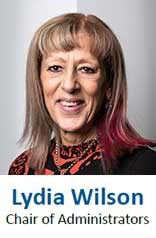 |
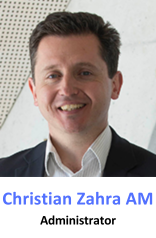 |
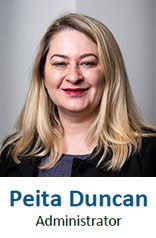 |
+ Your Executive
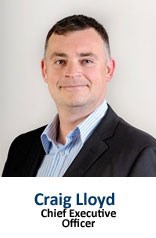 |
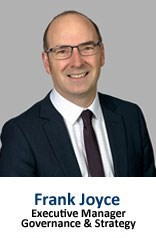 |
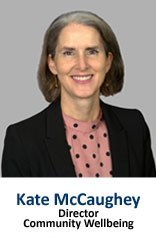 |
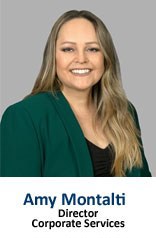
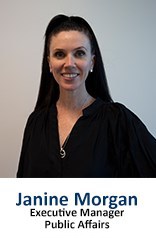 |
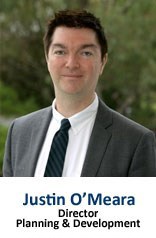 |
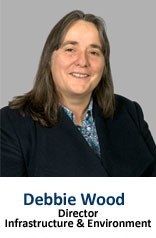 |
+ Our city
The City of Whittlesea is one of Melbourne’s largest municipalities and is the proud home to a fast-growing and diverse community.
Located in the north of Melbourne, our municipality spans approximately 490 square kilometres with a mix of established suburbs, growth areas and rural communities.
By 2040, the City of Whittlesea’s population is expected to increase by more than 60 per cent as we welcome around 8,000 new residents each year.
To accommodate our new residents, the City of Whittlesea will see around 56,000 new homes built across the municipality. These will be made up of a mix of new housing types to meet our community’s growing and diverse needs.
Our community is proud of its diversity. We have the second largest Aboriginal and Torres Strait Islander population in metropolitan Melbourne.
Adding to the rich culture and heritage of our municipality is a multicultural community so diverse that almost half of our residents speak a language other than English at home.
More and more families are calling the City of Whittlesea home with more than half of our households comprising of families with children. Every week, 62 babies are born into families living in the City of Whittlesea.
Our community’s largest age group is aged 35-59 followed by 18-34 year olds. People aged over 60 years make up 16 per cent of our population.
- Population
- 236,539 - 2020
- 270,998 - 2025
- 382,439 - 2040
- 34,000 additional residents in the next five years
- Dwellings
- 71,013 - 2016
- 93,924 - 2025
- 134,496 - 2040
- 2500 additional dwellings per year (average)
- Age
- 0-4 - 8%
- 5 to 17 - 17%
- 18 to 34 - 26%
- 35 to 59 - 33%
- 60+ - 16%
- Aboriginal and/or Torres Straight Islander - 1638 second largest population in Metro Melbourne.
- 4000 National Disability Insurance Scheme participants in the City of Whittlesea
- 58% of the City's NDIS participants are under the age of 18
- 31% of the City's NDIS participants have autism.
- Household structure
- 42% Couples with children
- 22% Couples without children
- 16% Single person household
- 12% One parent families
- 4% Other not classifiable
- 3% Group household
- 1% Other families
- Carers - One in 8 residents are carers of people who have a disability
- The City of Whittlesea is the 5th socio-economically disadvantaged of 31 metropolitan local governments
- Country of birth
- 58% Australia
- 6% India
- 6% Not stated
- 3% Italy
- 3% North Macedonia
- 2% Greece
- 2% China
- 20% Other born overseas
- 36% of our community was born overseas
- Top languages excluding English
- 5% Macedonian
- 5% Arabic
- 5% Italian
- 4% Greek
- 3% Punjabi
Data from
- 2020 ABS Estimated Resident Population: Australian Bureau of Statistics 2021, Regional Population Growth, Australia (3218.0)
- 2025 and 2040 forecast population and dwellings: Population and household forecasts, 2016 to 2041, prepared by .id (informed decisions)
- Figures for people with disability and carers: City of Whittlesea 2019, Annual Household Survey
- All other demographic data: Australian Bureau of Statistics, Census of Population and Housing 2016
+ Our municipality
Council has captured the priorities and values of people living in the City of Whittlesea’s established, growth and rural areas based on almost 5,800 pieces of feedback from people across the municipality. Council also considered relevant health and demographic data about our community and other feedback received through broader engagement. Priorities differ across areas and precincts and reflect the wide‑ranging community aspirations addressed in this Community Plan 2021‑2025.
Bundoora
Owing to its two universities, Bundoora has a high number of people aged in their 20s who are renting alone or living in group households. Students share the suburb with older families and couples, many of whom have called Bundoora home for several decades. During consultation Bundoora residents told us they would like to see better waste management, more well- maintained green spaces and improved public transport options close to home.
Donnybrook
Propelled by a recent surge in greenfield housing development, Donnybrook is transforming from a small rural town into a community that will grow to a population of more than 25,000 people by 2031. Young families living in Donnybrook value social and community connections, with access to groups and activities for young children. As part of our engagement, Donnybrook residents told us they expect safe roads and essential infrastructure to be delivered at the right time to meet the community’s needs.
Doreen
With 28,000 residents now calling Doreen home, families in this community during consultation advocated for access to recreational facilities including leisure centres and swimming pools. The community values public open spaces and residents are avid supporters of maintaining our local natural environment.
Epping
This vibrant precinct plays a critical role in the City of Whittlesea’s economy and will continue to attract investment into the future. During consultation, people who live in Epping told us they value the natural environment and outdoor spaces. These residents are seeking well maintained spaces to meet and exercise along with better footpaths and natural shade.
Epping North
Epping North is the largest precinct in the City of Whittlesea with a population of around 38,000 people and 15,000 more people expected in the next two decades. The young, and culturally diverse residents of Epping North told us they support local businesses to strengthen the economy and create more employment opportunities and value places to play and be active.
Lalor
This well-located precinct has a growing community of residents aged in their 70s and 80s but is also popular with young couples and families, many of whom were born overseas from countries including India, Iran and Iraq. Through our engagement residents of Lalor told us they value local shopping and being connected to neighbours. These residents seek more local events such as festivals and markets to build relationships and experience other cultures.
Mernda
Having experienced rapid population growth in the last decade, Mernda continues to attract young couples and families to the area with a further 6000 people forecast to call Mernda home before 2030. Mernda residents advised they seek improved road and transport networks to connect them to employment, schools and services, and understand the importance of supporting local businesses.
Mill Park
This community is characterised by mature families and empty nester couples aged in their 50s and 60s. This established area has limited opportunity for new housing growth. The community told us they value its local vibrant businesses and seek safer and better-connected roads and bike paths. Residents also seek access to green spaces where they can play, exercise and meet with friends and family.
Rural north (including Beveridge, Eden Park, Humevale, Kinglake West, Woodstock and Yan Yean)
The City of Whittlesea’s rural north, containing a mix of natural biodiversity, agricultural businesses and rural residential properties, is home to older families and retirees. Through the consultation process, the community advised they are passionate about growing the local economy by encouraging small business ventures, supporting agribusiness and providing opportunities for new social enterprises.
South Morang
This community is largely made up of families who have lived in the area for more than 10 years, with children who are at, or approaching, secondary school age. During consultation South Morang residents told us they are seeking more parks and upgrades and better maintenance of existing open spaces. The community would also like to see a diverse range of festivals and events to experience culture and connect with their neighbours.
Thomastown
Our most culturally diverse community, more than half of Thomastown’s residents were born overseas. One in five residents are aged over 65 years, making it an ageing community. Through consultation we were advised that feeling safe and secure in their neighbourhoods is important to people in Thomastown. Better waste management practices, recycling and access to more public transport also rank highly.
Whittlesea Township
This township in the City’s north has a population of 5,500, which is largely made up of maturing families with teenage children, empty nester couples and retirees. The community advised they value improved access to services such as health, disability services and employment support. Whittlesea Township residents support small businesses and seek meaningful work opportunities close to home.
Wollert
A booming population located in the west of the municipality, Wollert is set to welcome 5,500 households in the next 10 years. The diverse community of first home buyers and young families let us know that they value community spaces where they can meet and host events, as well as parks and playgrounds. The community likes to make new social connections and seeks better quality roads to support its growing population.
+ Community engagement
The City of Whittlesea invited the community to share its ideas and priorities for Council to focus on delivering over the next four years.
More than 1,500 people joined the conversation to give Council a clear understanding of the community’s priorities that has helped inform the Community Plan 2021-2025.
Council asked the community two key questions to consider when forming their views and ideas:
- What should Council focus on over the next 4-10 years to make sure the City of Whittlesea is a connected community, with liveable neighbourhoods, a vibrant local economy and sustainable environment?
- How should Council’s $2m Community Recovery Fund be spent to help our community recover from the impacts of the COVID-19 pandemic?
5,771 comments from 1,394 people helped shape the Community Plan 2021-2025.
Of those who responded:
- 77% live in the City of Whittlesea
- 10% work in the City of Whittlesea
- 12% are Council employees
- 6% are visitors
- 3% are business owners
- 1% study locally
- 26 community service organisations provided input
- 50% of participants lived in established areas
- 38% of participants live in growth areas
- 11% live in rural areas
How we engaged
- 40 events and activities (online and face-to-face)
- 492 surveys completed online
- 212 people participated in 17 focus groups for diverse communities (children, young people, multicultural, LGBTIQ+, people with disabilities and carers, and Aboriginal communities)
- 276 survey postcards were completed
- 12 pop-up stalls at shopping centres, playgrounds and community centres
- 26 people joined our participatory budgeting workshops to develop recommendations for the $2m Community Recovery Fund
For more information about how Council engages with the community and for information about current consultations please visit www.engage.whittlesea.vic.gov.au.
+ About Our Community Plan 2021-2025
The City of Whittlesea's Community Plan 2021-2025 shapes the future for the City of Whittlesea and has been informed by extensive community engagement.
It clearly articulates what Council plans to achieve between 2021 and 2025, how it will prioritise its resources and effort, and how it will measure success by meeting the needs of its community.
This includes Council's planning to achieve key health and inclusion outcomes such as family violence prevention, climate change, gender equality, reducing barriers to goods, services and facilities access, participation in employment, inclusive communications and preventing discrimination against persons with a disability.
In developing the Community Plan, Council considered the community’s goals and aspirations set out in Whittlesea 2040, which was developed in 2018 with significant input from people who live, work, study, visit and those who do business in the City of Whittlesea.
Integrated Planning Framework
This Community Plan is the City of Whittlesea’s main medium-term strategic planning document. It expands on the long-term 20-year community vision, Whittlesea 2040: A place for all, to include key outcome priorities, services and initiatives over the next four years. It plays a central role in Council’s overall strategic planning and reporting framework.
Our goals, key directions and health and wellbeing focus areas
The five key goals under Whittlesea 2040: A place for all – connected community, liveable neighbourhoods, strong local economy, sustainable environment and high-performing organisation align to key state planning frameworks for health and wellbeing, disaster recovery, and access and inclusion.
Goal 1 Connected community
Key directions:
- A socially cohesive community
- A healthy and safe community
- A participating community
Health and wellbeing focus areas: includes Council's planning to achieve health outcomes through promoting gender equality, social connection and inclusion, preventing family violence and discrimination, and reducing barriers to services and facilities.
Goal 2 Liveable neighbourhoods
Key directions:
- Smart, connected transport network
- Well-designed neighbourhoods and vibrant town centres
- Housing for diverse needs
Health and wellbeing focus areas: accessible, safe connected walking and cycling paths within mixed use precincts, improved transport infrastructure.
Goal 3 Strong local economy
Key directions:
- Increased local employment
- Education opportunities for all
- Successful, innovative local businesses
Health and wellbeing focus areas: strengthening the local economy, attracting investment and facilitating new opportunities for working locally and remotely. Education and employment pathways.
Goal 4 Sustainable environment
Key directions:
- Valued natural landscapes and biodiversity
- Climate ready
- Leaders in clean, sustainable living
Health and wellbeing focus areas: protecting the natural environment and biodiversity, increasing access to quality green open space parks and playgrounds, Greening Whittlesea, Green Wedge Management, action on climate change and its impacts on health with a focus on at risk precincts and groups.
Goal 5 High-performing organisation
Key directions:
- Driving better community outcomes
- More informed Council decisions
- More cost-effective investment
Health and wellbeing focus areas: integrating equity into planning and decision making and responding to poverty and financial hardship.
+ Planning for a healthy city
Planning in extraordinary times
A fast-growing community on the urban fringe presents opportunities but also challenges for our community.
The pace of growth can make it difficult to deliver timely infrastructure and services, causing challenges like limited access to public transport, health services and educational opportunities, unemployment and insecure employment, long commutes and traffic congestion, financial vulnerability, rental and mortgage stress, and social isolation. This contributes to more sedentary lifestyles, unhealthy weight and poorer mental health outcomes.
The City of Whittlesea continues to listen to what our community needs and responds as effectively and efficiently as it can through community-driven decision-making.
We also advocate to other levels of government and stakeholders to partner with Council so that we can deliver the infrastructure and services our community deserves.
There is no doubt that we are now living in extraordinary times with the global COVID-19 pandemic impacting significantly on local employment, the viability of local businesses, community connections and mental health.
Council is committed to helping guide our community through its recovery phase with new initiatives and grants that will directly impact on improving the lives of those who live and work in the City of Whittlesea.
There have also been some positive changes through the pandemic like a greater willingness for our community to explore and connect with local neighbourhoods, reduced time and costs in commuting to work, leaving more time for family and increased opportunity for flexible and remote work. It has enabled a greater use of our local open spaces, and taking up new hobbies and interests such as gardening, walking or cycling. Council will pursue strategies to retain these positive effects.
Climate change is also a global public health challenge, reinforcing the need for Council to take a leadership role at the local level to minimise health impacts by enhancing tree coverage, greening and cooling urban areas and ensuring equitable access to quality parks where people can connect with nature.
For more information about the health of the community and contributing factors please visit the City of Whittlesea Health Profile at whittlesea.vic.gov.au/healthprofile.
+ Our community’s ideas
Council engaged with people across the City of Whittlesea. From every suburb and across a mix of diverse groups, Council has used the ideas from our residents and businesses to help shape the next four years.
Across all of our engagement activities, people were strongly in favour of:
- More parks and playgrounds and improving the maintenance of those we already have
- Roads as a priority, including safety, roadworks and maintenance
- Support for local business, helping them grow with grants, incentives and marketing assistance
- Biodiversity, including planting more trees, conserving habitats and looking after wildlife
- Improving waste management, especially promoting recycling and practical systems for hard rubbish and green waste.
- Presentation of the City, including clean streets and addressing dumped rubbish.
Other key priorities included focusing on local employment, shops and neighbourhoods, maintaining public safety, and increasing community facilities and activities like festivals.
To help recovery from COVID-19, the community asked Council to focus on:
- Economic support, particularly by helping small businesses and creating employment opportunities
- Community connections, including supporting vulnerable people and providing facilities and spaces for groups of people to meet
- Health promotion, emphasising mental health and wellbeing; natural environments and green open space; connected walking and cycling paths and trails, safety in public places and opportunities for social connection and exercise.
Pandemic Community Recovery Fund
In the 2020/21 Annual Budget, Council committed $2 million for COVID-19 recovery. The pandemic extended longer than expected and most of the ‘recovery’ will fall into 2021/22.
Funding for this initiative will be expended in 2021/22 and includes recommendations made to Council via a participatory budget workshop program that included 26 people from our community. This group was selected to demonstrate diversity in our municipality and, together, participants considered the evidence and impacts of the pandemic and developed recommendations to help our community recover.
Recommendations for the $2 million Pandemic Community Recovery Fund
Whittlesea 2040 goal Connected community
Recommended action
- Coordinate recovery efforts across the municipality including COVID-19 safe messaging and mass vaccinations
- Grants program to support community service organisations as well as emergency relief
- Strengthen multichannel communications with community and local businesses
- Establish local community hubs to increase community connections
Whittlesea 2040 goal Liveable neighbourhoods
Recommended action
- Create more community gardens and support local events
- Advocate for better public transport
- Build health and recreational facilities
- Provide more public amenities
Whittlesea 2040 goal Strong local economy
Recommended action
- Business support program and incentives to buy local
- Enhanced learning and job-ready opportunities for young people
- Increased training and support for unemployed and underemployed residents
Whittlesea 2040 goal Sustainable environment
Recommended action
- Pilot Environmental Upgrades Program to support uptake of renewable energy
- Continue solar panel and battery scheme for council buildings to reduce running costs to community groups
Many of these recommendations have been included in the Community Plan 2021-2025 and others have been included in Council’s planned activities and programs.
+ Priorities, initiatives and actions
Council has heard what is most important to our community.
We have listened to the ideas presented during the consultation about how best to support our community to recover from the impacts of the COVID-19 pandemic, and through to 2025.
Council has prioritised initiatives across each of the goals from our shared community vision – Whittlesea 2040: A place for all. An annual action plan will be developed and shared with our community to confirm what initiatives will be actioned by Council each year.
Delivering on these actions will ensure our decisions over the four-year cycle of this Community Plan are shared priorities with our residents and local businesses.
The City of Whittlesea’s Community Plan 2021-2025 constitutes the Council Plan under section 90 of the Local Government Act 2020 (Vic). It integrates Council’s:
- Municipal Public Health and Wellbeing Plan under section 26 of the Public Health and Wellbeing Act 2008 (Vic), subject to Secretary of Health approval under section 27 of the Public Health and Wellbeing Act 2008 (Vic)
- COVID-19 pandemic recovery actions under section 60AE of the Emergency Management Act 2013 (Vic)
- Disability Action Plan under section 38 of the Disability Act 2006 (Vic).
The Municipal Public Health and Wellbeing Plan (MPHWP) is a strategic plan that identifies evidence-based goals and strategies to help the community achieve optimum health outcomes and is informed by the Victorian Public Health and Wellbeing Plan 2019-2023.
There are a range of legislative requirements for Local Government in health planning:
- In line with Recommendation 94 of the Royal Commission into Family Violence, the Public Health and Wellbeing Act 2008 requires council to specify measures to prevent family violence and respond to the needs of victims of family violence in the local community
- The Gender Equality Act 2020 requires council to undertake a Gender Impact Assessment when developing or reviewing any policy, program or service that has a direct and significant impact on the public.
- The Climate Change Act 2017 requires a focus on tackling climate change and its impact on health.
+ Goal 1: Connected community
Over the next four years we will continue to work to foster an inclusive, healthy, safe and welcoming community where all ways of life are celebrated and supported. Our community priorities are: Public safety, festivals, events, arts, culture, heritage and markets, social connection: access and inclusion, sports facilities and infrastructure and community groups and community infrastructure.
Our key initiatives:
What we will deliver in 2021-2025
We will:
- Improve safety and perceptions of community safety in public spaces including for people with disabilities and their carers, women, girls and gender diverse people
- Prevent and respond to family and gender-based violence by working with local service providers and the community
- Increase responsible pet ownership and reduce the adverse impact of domestic animals on wildlife
- Support our community to be safer, better prepared and more resilient to emergency events and disasters through increased access to information and education
- Continue to work with partners to lead recovery from the COVID-19 pandemic including vaccinations and COVID-19 safe health messaging as well as early years, school, cultural and linguistically diverse communities,refugee, asylum seekers and workplace immunisation programs
- Deliver a Connected Communities Strategy that will enhance social inclusion, civic participation, health, wellbeing and safety and reflect and celebrate the diversity of religions, cultures, heritages, abilities, ages, gender and sexual orientation which make City of Whittlesea a place for all
- Strengthen community connections through a vibrant arts and events scene celebrating our diverse culture and heritage, activated open spaces and facilities and local markets
- Establish a Gathering Place to increase connections to culture, heritage, land and healing for Aboriginal people
- Implement a new community grants program to support our community and businesses, encourage festivals and events as well as helping our community and vulnerable residents recover from the pandemic
- Deliver an inclusive leadership program to support community members to develop their leadership skills and potential
- Advocate for more mental health services and prevention programs for our community including young people
- Work with our community and partner organisations to support older residents to access quality local services
- Commence construction of a leisure and wellbeing facility in Mernda
- Build additional outdoor netball courts in a number of neighbourhoods including Epping, Doreen, Mill Park, Whittlesea, South Morang, Mernda
- Improve access to physical activity and social connection by providing accessible, multiuse sports infrastructure which meets the diverse needs of our community
- Enhance our network of vibrant and welcoming community centres at the heart of our neighbourhoods - including building new centres at Mernda, Wollert, and Donnybrook
- Strengthen engagement with community through supporting or developing advisory groups and networks across our diverse community including young people, business, sustainability, people with a disability and Aboriginal people
- Transition the Youth Advisory Committee to a Whittlesea Youth Council.
- Deliver a new Whittlesea Reconciliation Action Plan
+ Goal 2: Liveable neighbourhoods
Over the next four years we will ensure our City is well planned and that our neighbourhoods and town centres are convenient and vibrant places to live, work and play. Our community priorities are: new and upgraded parks and playgrounds, transport improvements, local shops, social and affordable housing, clean streets and spaces, traffic management and road safety.
Our key initiatives:
What we will deliver in 2021-2025
We will:
- Increase the quality, access, safety and amount of public open space in the municipality, including additional dog parks and a local park improvement program
- Develop and implement a plan to improve public toilets making them accessible, useable and safe
- Implement the Quarry Hills Regional Park master plan to increase accessibility, useability and activation
- Increase safety and accessibility of transport with a focus on major corridor improvements, public transport usage and safe connected cycling and walking networks
- Advocate for new or upgraded roads including Epping Road, Bridge Inn Road, E6, Yan Yean Road, Findon Road and Donnybrook Road
- Improve disability access to public transport including installation of bus shelters across the municipality
- Advocate for better public transport, including better rail, tram and bus infrastructure and services and lead the public transport strategy under the Northern Council's Alliance
- Design and upgrade local streetscapes and shopping precincts to make it easier to move about, celebrate local culture, heritage and character, and connect people to the natural environment
- Deliver more affordable and accessible homes in the municipality
- Increase the number of waste and recycling bins in public spaces and parks
- Implement the Safe Routes to Schools program to improve the safety of school children.
+ Goal 3: Strong local economy
Over the next four years we will seek to make our City a smart choice for innovation, business growth and industry investment as well as supporting local businesses to be successful, enabling opportunities for local work and education. Our community priorities are: supporting local business, local employment, economic development, delivering libraries, schools and early years education, technology and innovation and creating employment pathways.
Our key initiatives:
What we will deliver in 2021-2025
We will:
- Strengthen the visitor and agri-tourism economies by implementing a new Destination Tourism Plan
- As part of COVID recovery, deliver a ‘support local’ campaign and incentive program to support the community and local businesses
- Work with partners to increase opportunities for local work, training, apprenticeships and programs with a focus on young people and groups who experience significant barriers to employment
- Implement the Investment Attraction Plan to attract investment, strengthen the local economy and increase the number and diversity of local jobs
- Work with the Victorian Government and key stakeholders to progress planning for key employment precincts such as Epping central, the Beveridge Intermodal Freight Terminal, the Melbourne Food Innovation and Export Hub and the Vearings Road employment precinct
- Implement the Victorian Government-funded 3-year- old kindergarten service together with the early childhood sector and deliver infrastructure projects at key sites across the city
- Work with the Yarra Plenty Regional Library corporation to continue improving our library services around accessibility, innovation and community learning
- Advocate for improved mobile phone coverage in rural areas
- Encourage employment pathways and sustainable land management practices at the Whittlesea Community Farm and Food Collective
- Support local agribusinesses to be sustainable, grow and be prepared for climate change.
+ Goal 4: Sustainable environment
Over the next four years we will prioritise our environment and take action to reduce waste, preserve local biodiversity, protect waterways and green spaces and address climate change. Our community priorities are: waste management, biodiversity, community education and awareness, maintaining and increasing the number of trees, sustainable energy and infrastructure , water quality and security and climate change action and awareness.
Our key initiatives:
What we will deliver in 2021-2025
We will:
- Deliver key actions from our Rethinking Waste Plan, including introducing residential glass recycling, extending food and garden waste services, protecting the environment from litter and increasing sustainable procurement
- Improve the quality and activation of our water networks, source more water from alternative water supplies and use less water through water efficiency upgrades
- Finalise and implement the new Green Wedge Management Plan and 10 year action plan in consultation with the community
- Deliver on our Greening Whittlesea Strategy including increasing tree canopy along main road residential streets and in conservation reserves, park and major facilities
- Finalise and implement the Climate Change Plan, with a focus of reducing potable water use, reducing carbon emissions and transitioning to more sustainable resources
- Use less energy by investing in energy efficiency programs including energy efficient street lighting
- Introduce new local recycling drop off points including a resource recovery shop
- To protect and enhance Whittlesea’s environmental and sustainable future, we will undertake advocacy on behalf of our community, on climate change, water security and quality, vulnerable flora and fauna and waste reduction and reuse
- Undertake analysis of extreme heat on the health and wellbeing of our community to inform future planning to protect residents and precincts most vulnerable to heatwaves.
+ Goal 5: High-performing organisation
Over the next four years we will work to ensure Council engages effectively with the community, delivers efficient and effective services and initiatives, makes decision in the best interest of the community and delivers value to the community. Our community priorities are: customer service and responsiveness, communication and engagement with our community, service quality and Council performance.
Our key initiatives:
What we will deliver in 2021-2025
We will:
- Improve customer service through investing in technology, systems and Council staff and make it easier for our community to interact with Council
- Continue to implement our Advocacy Plan for infrastructure and services to support the diverse needs of our community
- Continue to be an employer of choice through developing and implementing a new Workforce Plan to attract and retain high quality and skilled staff to support our community
- Establish a place-based approach to Council planning, service and infrastructure delivery that is responsive to the distinct needs and aspirations of local communities
- Continue to implement the Local Government Act 2020 and publicly report on an action plan to embed good governance at the Council
- Develop a long term community infrastructure plan responding to community service and infrastructure needs for sport, leisure, recreation, arts, heritage and culture, youth, older adults, families and children and libraries
- Continue to strengthen local community engagement in line with Council’s Community Engagement Policy to inform Council programs and decision-making
- Maintain strong communications with our community to promote access to services including multilingual , accessible for all and mobile friendly communications and website
- Implement, communicate and promote our Financial Hardship Policy 2021 to support our financially vulnerable residents
- Introduce regular reporting on Council's performance including the Community Action Plan and customer service performance
+ Council services
Council provides a range of important and valued services to support the community to be a place for all. Our services have been grouped under 26 service headings as outlined below. For each service we ensure the work that is undertaken is aligned to deliver the Community Plan and that the services adapt to the changing needs of our growing community. Our services may be further refined as we continue to improve our services.
Connect Community
- Animal management
- Ageing Well
- Arts, heritage and events
- Community facilities
- Aboriginal reconciliation
- Customer service, communications and civic participation
- Children and family services
- Community strengthening
- Youth Services
- Public health and safety
- Leisure and recreation
Liveable neighbourhoods
- Traffic management
- Roads, public transport and footpaths
- Planning and building
- Parks and open space
Strong local economy
- Local business support
- Libraries
- Investment attraction
Sustainable environment
- Biodiversity and land management
- Water management
- Waste and recycling
- Climate change action
High performing organisation
- Our systems and knowledge
- Our people
- Our governance
- Our finance and assets
Data from
- 2020 ABS Estimated Resident Population: Australian Bureau of Statistics 2021, Regional Population Growth, Australia (3218.0)
- 2025 and 2040 forecast population and dwellings: Population and household forecasts, 2016 to 2041, prepared by .id (informed decisions)
- Figures for people with disability and carers: City of Whittlesea 2019, Annual Household Survey
- All other demographic data: Australian Bureau of Statistics, Census of Population and Housing 2016
+ How we will measure our progress
We will use the Community Vision: Whittlesea 2040 A place for all indicators to measure our progress on the Community Plan. We will report on these annually to the Community. During 2021-2025 we will review and update these measures to ensure they align with the identified community priorities outlined in this plan.
Goal 1 Connected community
- Social cohesion
- Physical activity
- Mental health
- Safety in public areas
- Civic participation
Goal 2 Liveable neighbourhoods
- Commuter travel time
- Ease of walking and cycling
- Access to open space
- Access to services and facilities
- Housing affordability
Goal 3 Strong local economy
- Local jobs
- Access to education
- Gross Regional Product
Goal 4 Sustainable environment
- Biodiversity protection
- Tree canopy coverage
- Carbon emissions
- Water diversion
Goal 5 High-performing organisation
- Community satisfaction with Council decision making
- Customer satisfaction
- Community engagement
- Financial sustainability
Action Plan 2022-2023
This Community Plan Action Plan 2022-2023 (Action Plan) is the annual supplement to the Community Plan 2021-2025. It outlines the key actions we will focus on delivering throughout the second year of the Community Plan under our five goals: a connected community, liveable neighbourhoods, a strong local economy, a sustainable environment and a high-performing organisation.
+ Connected community
- Consult and develop the community local law to make our municipality safer
- Engage with culturally and linguistically diverse community groups to improve access to Prevention of Violence Against Women programs, services, and resources
- Implement new cat management initiatives, including the cat confinement local law
- Increase community emergency resilience and preparedness, including for people most at risk or at risk communities, to address emergency incidents such as fire, storm, flood, and pandemic
- Deliver the Emergency Services Exhibition in partnership with service organisations to increase community awareness, build relationships and educate around emergencies
- Finalise the Connected Community Strategy to guide how we create a socially cohesive, healthy, safe, and engaged community
- Increase partnerships with community groups and event providers so more people attend our vibrant events
- Complete design and commence construction of an Aboriginal Gathering Place to foster connections to culture, heritage, land, and healing
- Continue to deliver the Community Leadership Program to support residents’ leadership skills across community and civic projects
- Provide advice and support Neami National and other partners to establish the Mental Health Local Service for Adults and Older Adults
- Increase support to senior citizen groups via an expanded grants program
- Commence design and site preparations of the regional aquatics and sports centre in Mernda
- Increase provision of netball facilities to support increased female participation in sport and recreation
- Design the tennis facility at Huskisson Reserve
- Develop a Fair Access Policy Implementation Plan to increase participation, equality and inclusion in local sports and recreation, specifically among women and girls
- Create vibrant and welcoming community spaces with activities and programs responding to local community needs
- Commence constructing the Community Activity Centre in Patterson Drive, Donnybrook
- Establish a City of Whittlesea Youth Council
- Adopt the Whittlesea Reconciliation Action Plan 2023-2027
+ Liveable neighbourhoods
- Finalise the Liveable Neighbourhoods Strategy to drive Council's program of work to deliver desirable transport, planning, urban design, open space, and housing outcomes
- Commence design to improve access to the Whittlesea Township Park to better connect our community
- Continue to upgrade Whittlesea Public Gardens
- Continue to upgrade public toilets in line with the Public Toilet Amenity Plan
- Continue the construction of Granite Hills Major Community Park
- Deliver the local road resurfacing works
- Deliver the local road reconstruction works
- Improve disability access to public transport
- Commence streetscape improvements at Gorge Road shopping precinct in South Morang
- Advocate for increased affordable and accessible housing in the municipality to address the significant shortfall for local residents outcomes
+ Strong local economy
- Adopt the Agri-Food Action Plan to attract investment in the sector and support existing businesses
- Facilitate partnerships between industry, education and job seekers through targeted initiatives supporting under-employed people including people with a disability
- Develop a business grants and incentives program for business attraction and support
- Deliver industry development programs for priority sectors
- Finalise the refreshed Epping Central Structure Plan
- Continue implementing the kindergarten reform in conjunction with the Department of Education
- Open the Mernda Town Centre Community Library and commence works on the Library Hub at Kirrip Community Centre
+ Sustainable environment
- Continue to implement the Rethinking Waste Plan to support our community to become a leader in sustainable living
- Educate our community around illegally dumped rubbish to enhance compliance, and keep the city clean via an intensive dumped rubbish program
- Continue to renew and upgrade Peter Hopper Lake in Mill Park
- Continue to implement the Green Wedge Management Plan
- Improve conservation reserves fire management planning and operations
- Undertake a study to understand the current and future carrying capacity of wildlife, i.e. how many healthy wildlife numbers our Whittlesea environment can sustain now and into the future
- Continue to improve the energy efficiency of Council buildings and facilities including solar and lighting upgrades
- Investigate options for introducing a local resource recovery shop
- Develop a Readiness and Activation Guideline to mitigate the effects on our community in extreme heat events, particularly to support vulnerable community members
+ High-performing organisation
- Make it easier to interact with Council by building a customer portal, adding more services online and upgrading the city’s website
- Launch a new service centre in Whittlesea township
- Continue to advocate for Council's priority projects for better community outcomes
- Continue to implement the Workforce Plan to attract and retain skilled staff to deliver for our community, including an inclusive employment program
- Continue to implement the Gender Equality Action Plan to ensure a safe and equal workplace and progress towards becoming an Employer of Choice
- Finalise the Long-Term Community Infrastructure Plan
- Continue implementing our place-based service delivery model to be responsive to the needs of our local communities
- Finalise the High-Performing Organisation Strategy to guide effective and efficient use of resources, and good governance at Council
- Provide information and support to residents experiencing severe mortgage stress in line with Council's Financial Hardship Policy
- Implement Council's Research and Analytics Plan to enable informed decisions for the benefit of our community.
- Identify key initiatives that have a “direct and significant impact on community” for gender impact assessment under the Gender Equality Act 2020 operating environment



